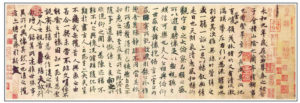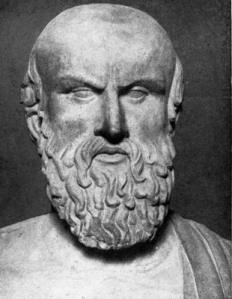Without going into what constitutes a classic, I wish to argue that works such as Paradise Lost, Hamlet, or War and Peace are classics and that it is not pejorative to believe that most works are not. Some of us are drawn to classics as I am and others are not; we do not need to go further.
As a Chinese student of European history and political thought, I believe it was inevitable that I would feel guilty at some point for having neglected the study of Chinese classics. I started, therefore, in 2003 to read (in English translation) the Romance of the Three Kingdoms. Of the four great Ming novels, I considered this most likely to suit my preference in reading.
I had found Arthur Waley’s Monkey, a selection from the Journey to the West, the most popular of the four classics, amusing but too fanciful and less than even-handed in its discussion of Daoism as opposed to Buddhism. It was after all the story of the pilgrimage made by a Buddhist monk.
The Water Margin struck me as too limited in its view of the world. Banditry, its main theme, has that effect I believe.
I honestly did not know what to make of the fourth novel, Jin, Ping, Mei (sometimes translated as “The Plum [Blossom] in the Gold[en] Vase”).
But I found reading the Romance in translation a great disappointment.
When I expressed to some friends the view that perhaps it was an over-rated work, a Japanese woman protested to me that it was her father’s favorite book, one that he read over and over. Later, a Korean friend told me that he owned several translations as a new one seemed to appear every fifteen or twenty years, so popular was the work among Koreans of a certain age.
For other reasons, I started to study classical Mandarin a year or two later and soon tired of the usual exercises in the usual book of language instruction. Archie Barnes’ wonderful Chinese through Poetry (2007) introduced to me the pleasure of reading traditional Chinese verse in its original language and gave me the courage to attempt the translation of the poems I found in the Romance. By that time I had already started translating some of the prose.
These efforts were made much easier by the existence of electronic Mandarin-English dictionaries with character recognition software that was available for personal digital assistants. I do not know how I could have undertaken what I eventually did if it were not for Pleco (R) and its product.
Finally, a chance conversation persuaded me that the Battle of Chibi (Red Cliff) was indeed pivotal in the development of the history of the Three Kingdoms and advanced the idea of bringing coherence to a selection from the Romance. This is open to some debate, of course, for coherence is not a universal literary value. For example, one suspects that the Ramayana is better known than the Mahabharata not because it is more coherent but primarily due to the unwieldy length of the latter.
The Romance too is a large work, comprising one hundred and twenty hui. Further, it bears the literary burden of the fact that by the half-way point of the book most of the main characters it started out with are dead. These aspects of the Romance are due to the desire to cover the entire period recognized as that of the Three Kingdoms in Chinese History, A.D. 220 to 280. The Battle of Chibi, however, begins where the Romance begins but ends with the funeral of Zhou Yu, commander in chief of the Wu kingdom of Jiangdong and a vital strategist in the Battle (chapter 57 of the Romance).
Of the chapters translated, I have taken out little: an episode here and there, together with a poem or portion of one every so often.
I toyed with changing the sequence of chapters or of parts of some chapters but came to the conclusion that Luo Guanzhong, the Ming dynasty compiler of the Romance, had done his work too well.
Lastly, I should say that I have added only to provide smoother transitions and to give a better sense of the passage of time. The Romance covers events over more than eighty years; the Battle extends over nearly thirty.
In all it took nearly four years to translate and retell the story and more than four months to see it through the editing and proof-reading before publication, originally in 2010 with a digital version the following year and a new edition, mainly to change the cover in 2016. It is my fond wish that this book will lead non-specialists, “general readers,” to explore the world of Chinese history, literature, and values.
This picture is a copy of the lanting xu or Preface to Orchid Pavilion, a collection of poems. This is considered a masterpiece of calligraphy and the Tang Emperor Taizong (d. A.D. 649) reportedly had the original buried with him. The image was downloaded on 6/262017 from http://www.seeraa.com/image/shufa-1.jpg

Agamemnon Must Die
This is an attempt to tell the story of the Oresteia by Aeschylus, the only Greek trilogy that has survived to the present. It is said to have won first prize in an Athenian festival in 458 B.C. Aeschylus is known (on the basis of fragments quoted or titles recorded) to have written about seventy plays of which only seven have survived.
The trilogy was based on a popular group of legends surrounding the royal family of Atreus, king of Mycenae and father of Agamemnon and Menelaos, the husband of Helen (of Troy). The legendary Trojan War may have taken place in the 12th century B.C., seven centuries before Aeschylus’ drama. I first read the three plays in the translation by Richmond Lattimore (1942, 1959) for a college course that introduced the plays as being of “world-historical moment” for Western Civilization
Lattimore, the translator, thought Aeschylus had “perfected lyric tragedy,” such that it had “never since” been so “completely realized.” Other scholars commented on the “unfailing magnificence of poetry” in the trilogy, and declared that “the state [serving] as impartial arbiter [for murder] was indeed a momentous reform” moment in Western thought.
I, however, did not “get it.” Agamemnon Must Die is the result of a belated attempt to make sense of the story and its message.
The following image of Aeschylus was downloaded on 6/29/2017 from https://encrypted-tbn0.gstatic.com/images?q=tbn:ANd9GcR9vgOghNd3Dh9VaXalyfe3GKXVLsVejptiPMhowrF96d5cez4jxA
Planned novels based on classical matters
Job’s Story a modern retelling
Dream of Red Mansions a modern retelling